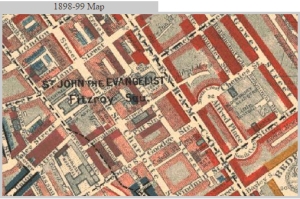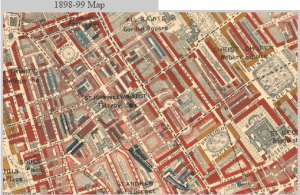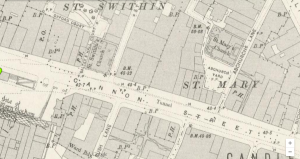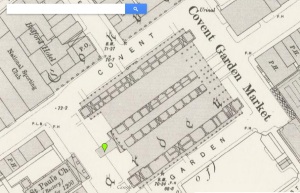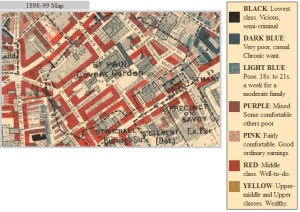Tottenham Court Road is a road mentioned in the Sherlock Holmes story “The Adventure of the Blue Carbuncle.” It is here where Peterson, the commissionaire, witnessed a scuffle between a stranger and a group of “roughs,” presumably teenagers or young adults that loitered the area, on his way home that night from work As the strange man attempts to fight back he breaks the window of a shop on the road, suggesting that this is a commercial area. Since Peterson is a commissionaire, or a doorman, it can also be assumed that there are residences nearby.
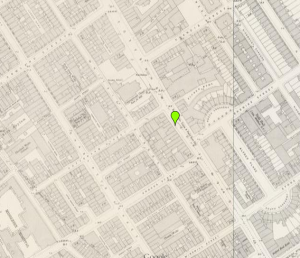
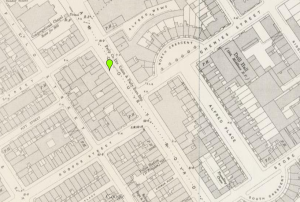
I searched “Tottenham Court Road” in the Charles Booth Online Archive (http://goo.gl/JgRmhL) where it provided this map:
The most prominent colors on the map seem to be red and pink. Red on the map symbolizes individuals who were “middle class” and “well-to-do” while the pink symbolizes those who were “fairly comfortable” and made “good ordinary earnings.” It can be assumed that most of the people who lived in this area owned or worked in a shop in the area, which would provide them with good or excellent wages. However, despite the presence of the middle class, there are small areas where there is greater poverty. Moving a little farther away from Tottenham Court Road, shades of light and dark blue begin to appear on the map, symbolizing the poor, who earned “18s to 21s a week for a moderate family” and the very poor, described as “casual” with “chronic want.”
The zoomed out map appears here:
Even though Tottenham Court Road seems to be a busy commercial destination, it is not a surprise that the strange man with the goose was involved in a row in this area, especially considering it was at a time where most shops might be closed for the evening, meaning there were less people around. The individuals who lived in the poorer areas surrounding Tottenham Court Road most likely loitered these areas at night. Because of the goose the man was carrying, he seems to be a prime victim for poor assailants. Because of this connection to the story and the real-life area, I was interested about what other crimes were committed in this area.
I searched Old Bailey Online (http://www.oldbaileyonline.org) see what crimes were committed on Tottenham Court Road and the areas surrounding it. Many of the crimes committed in this area are relevant to the types of crimes Sherlock Holmes dealt with. The most common crime seemed to be theft with counts of simple things such as pocketpicking to more serious counts of cases like grand larceny and violent theft. There were also counts of murder and sexual assaults in the area, though these were very rare. As unfortunate as it is, It is safe to assume that the theft taking place in the area is due to the road being in close proximity to more impoverished areas. Again, it connects the violent row between the stranger with the goose and the group of assailants.
Overall, this project was very helpful in learning about different areas in Sherlock Holmes’ London, how they were in real life, and what purpose they served in the stories. Some of the sights were easier to manage than others, but all of them had an abundance of information that helped pinpoint specific details about the specific areas and/or landmarks.
